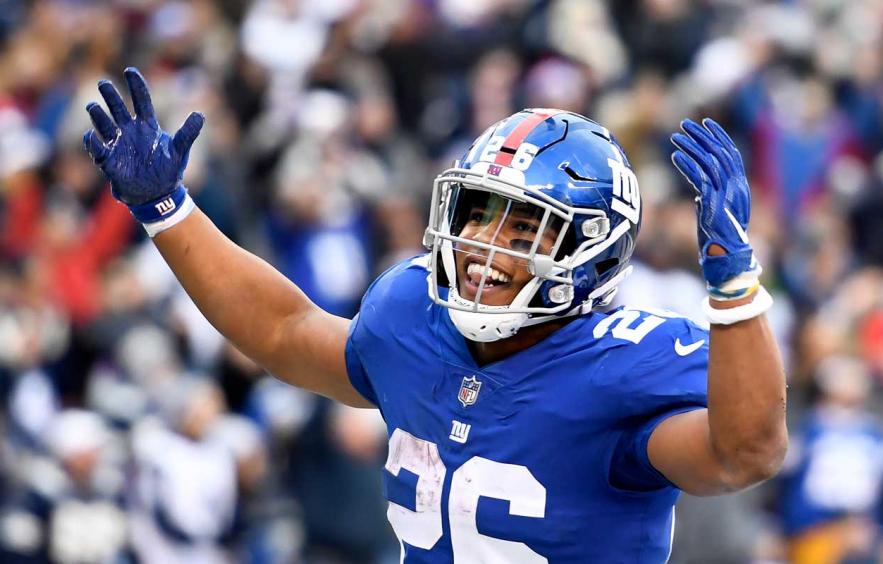When to Draft Running Backs in Your Fantasy Football League

As the NFL continues its seemingly unending upward trajectory towards a pass-first league, it can sometimes be a hassle figuring out exactly what we should be doing with our fantasy football running backs. This article is meant as a comprehensive guide through three of the most common theories of drafting; Zero Running Back, Stud Running Back, and Cornering the Market. I wouldn’t say that I’m an ardent supporter of any single theory of drafting, and I do my best to not give myself hard and fast rules while I’m on the clock. On the other hand, I do believe creating some parameters for yourself is helpful, especially when in a high number of leagues.
Before you take any of these strategies to heart, make sure you look at your league settings. If you can only start two running backs why would you ever need to draft seven? If you must start three, or even four, how much sense does it make to wait for eight rounds before you take one?
Zero RB
We’ll start off with a theory that has become a staple of the fantasy football vernacular over the past several seasons. Quite simply the strategy is as follows; wait as long as you can to draft your running backs to load up on quarterback, tight end, and especially, wide receivers. The main principals of Zero RB are to grasp as much of the ever-increasing passing game as possible while also avoiding sinking high draft capital into the fantasy football position most susceptible to injury.
The Zero Running Back strategy bears out in the numbers. Over the past fives seasons, running backs hold only 35% of the top-24 PPR finishes among the skill positions (running back, wide receiver and tight end.) In comparison, 56% of those finishes belong to the wide receiver position, who are exactly who you’d be looking to load up on if you take this approach.
Buying into the league-wide shift towards a more pass friendly game can be beneficial, as the years of multiple 300-carry backs are being left in the dust. To visualize this in a simplistic manner, I have provided two graphs below—the first represents league-wide pass attempts by year since the turn of the millennium. While the uptick of four extra pass attempts a game by a given team may seem inconsequential, do understand that extrapolated over a 16-game season, this would equate to over one thousand extra pass attempts across the league.

The 12.5% increase over this sample size has had a direct impact on the heavy workload of the bell cow running back. For the first time this century only one running back finished the year by rushing the ball 15 or more times in 10 or more games. While this is unprecedented waters, the number has been trending that way for a long time. After the NFL averaged 12.2 such running backs over the first thirteen years of the 2000s, the league has averaged only 5.3 of them over the last six seasons.

It’s very possible that 2019 was simply an outlier year. Maybe we’ll return to the days of four, five or six backs with bankable high-usage workloads on the ground. Either way, it’s important that we find running backs who will be used in the passing game. Especially if we are to employ the Zero RB methodology.
For a comprehensive detailing of the foundations of Zero RB, I encourage you to check out the creator, Shawn Siegele’s original article on the subject prior to the 2014 season. To summarize, the main idea behind ignoring “value-based drafting” to instead inject risk into our fantasy rosters we need to look no further than Antifragility. Popularized in his book Antifragile, Nassim Nicholas Taleb introduces the idea of Antifragility as a system that actually becomes stronger when introduced to volatility, uncertainty and stress. Without diving too far down the rabbit hole, this correlates directly to the Zero RB method of drafting; if we attack high-upside passing game pieces with our first five picks and fill our depth chart with risky but (hopefully) rewarding running backs we are able to cash in when injuries or expensive draft capital pieces don’t live up to the hype on other fantasy owners’ teams.
While we tip-toe around the minefield of “safe” running backs—especially at the first/second round turn—and instead attack high upside wide receivers we are in turn adding roster pieces that have a higher propensity to finish the year as a top-24 PPR asset. Remember that 56% of the top-24 PPR finishes were wide receivers while running backs have only accounted for 35% over the last five seasons.
Here’s what an optimal running back group might look like using this strategy:

- All Premium Content
- The most Accurate Rankings Since 2010
- Expert Draft Picks w/DraftHero
- Highest Scoring Lineup + Top Available Players w/LeagueSync
- ...and much much more






















